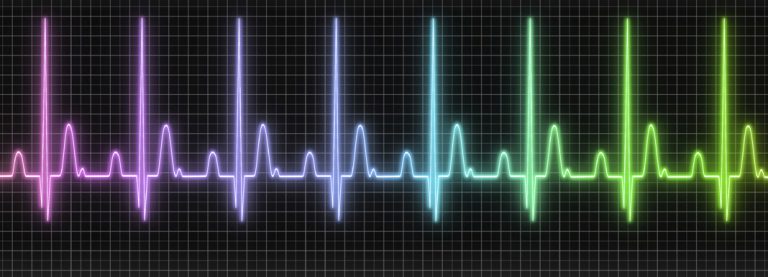
On November 10, 2018, heart specialists presented recommendations for preventing heart attacks from the American College of Cardiology and the American Heart Association at the AHA’s 2018 Scientific Sessions in Chicago (J of the Am Coll of Card and the AHA journal, Circulation, November 2018). Specifically, they recommend that doctors:
• Treat all of their patients with recommendations for heart-attack-preventing lifestyle changes, and
• Treat all patients with significant heart attack risk factors with medications that lower blood levels of the bad LDL cholesterol.
Statins have been recommended for many years, but the heart specialists also recommend the use of ezetimibe (brand name Zetia), which is now available inexpensively as a generic drug. Ezetimibe reduces the amount of cholesterol absorbed in the small intestines. They also recommend use of PCSK9 inhibitors that block a process that prevents the liver from removing LDL from the bloodstream. The price of one brand of these PCSK9 inhibitors has been reduced from $14,000 per year, but it still costs nearly $6,000 per year.
The guidelines recommend that:
• People under age 75 who have a lot of plaques in their arteries should be given “high-intensity” statin treatment to reduce LDL by at least 50 percent.
• Middle-aged diabetics (aged 40-75) should be given “moderate intensity” statin therapy.
• People with a known history of heart disease should be given statins plus ezetimibe. If LDL is not below 70, PCSK9 inhibitors should be added.
• People with genetic (familial) high cholesterol should be treated to get their LDL cholesterol below 100 with statins, and if necessary, ezetimibe and PCSK9 inhibitors.
• All diabetics should be treated with intensive lifestyle changes
Basis for the Guidelines
Heart attacks are caused by plaques breaking off from the inner lining of arteries. These new guidelines are based on research showing that arteriosclerotic plaques start to form at LDL cholesterol levels at 50 to 60 mg/dL and plaques do not start to regress until LDL levels drop below 50 (J of the Am Coll of Cardiol, Dec 19, 2017;70:2979-2991). The cardiologists now consider LDL levels greater than 160 mg/dl to be very high, and they recommend treating high risk patients to achieve LDL levels below 70 mg/dl.
Heart Attack Risk Factors
• high systolic blood pressure: >120 at bedtime
• high cholesterol: non-HDL cholesterol >130 mg/dL (below 3.4 mmol/L)
• high triglycerides: >150
• high blood sugar: >140 mg/dl one hour after meals
• high HBA1C: >5.7 (diabetes)
• small LDL particle size (an indicator of diabetes)
• high CRP: >1 (a measure of inflammation)
• high Lp(a): >130 (a genetic clotting condition)
• high homocysteine: >10
• abdominal obesity: pinch 3″ or more of skin and fat near belly button
• family history of heart attacks
• having autoimmune or inflammatory conditions such as psoriasis, HIV, rheumatoid arthritis, lupus or kidney disease, which increase risk for heart disease
Lifestyle factors that increase risk of heart disease include:
• smoking
• taking more than one alcoholic drink a day
• not exercising for 30 minutes at least five times a week
• not eating lots of plants (vegetables, fruits, beans, nuts and so forth)
• eating a lot of sugar-added foods, sugared drinks, red meat, processed meat or fried foods
Coronary Artery Calcium Score
In addition to tests for the risk factors listed above, doctors may order a special CT X ray of the heart arteries that can tell if a person has lots of plaques in his heart arteries and if the plaques are likely to break off to cause heart attacks. Scores greater than 100 are associated with a slightly increased risk and scores greater than 500 show significant increased risk. A radiologist can predict if a plaque is stable or unstable (likely to break off to cause a heart attack). Plaques that have breaks in the calcium lining the inner plaque and are full of fat are the ones most likely to break off to cause heart attacks. See Exercisers Have More Stable Plaques
Endurance athletes should be warned that they can have high calcium scores even though they may be at low risk for heart attacks. Over time, endurance exercise can increase the size of coronary arteries and since area equals the square of the radius, doubling the size of an artery quadruples the calcium score. These athletes are likely to have large amounts of plaque but the arteries will still be open wide enough for plenty of blood to circulate.
A calcium score X ray exposes a person to radiation, so discuss the pros and cons of this test with your doctor.
My Recommendations
Today, more than one third of North Americans are at high risk for heart attacks because of unhealthful lifestyles. Everyone should follow the guidelines for healthful living from an early age to help prevent heart attacks as well as strokes, dementia, diabetes and many other diseases. See Heart Attack Prevention. People who cannot get their non-HDL cholesterol down to acceptable levels will also be advised to take medications. Check with your doctor.
Checked 8/2/23